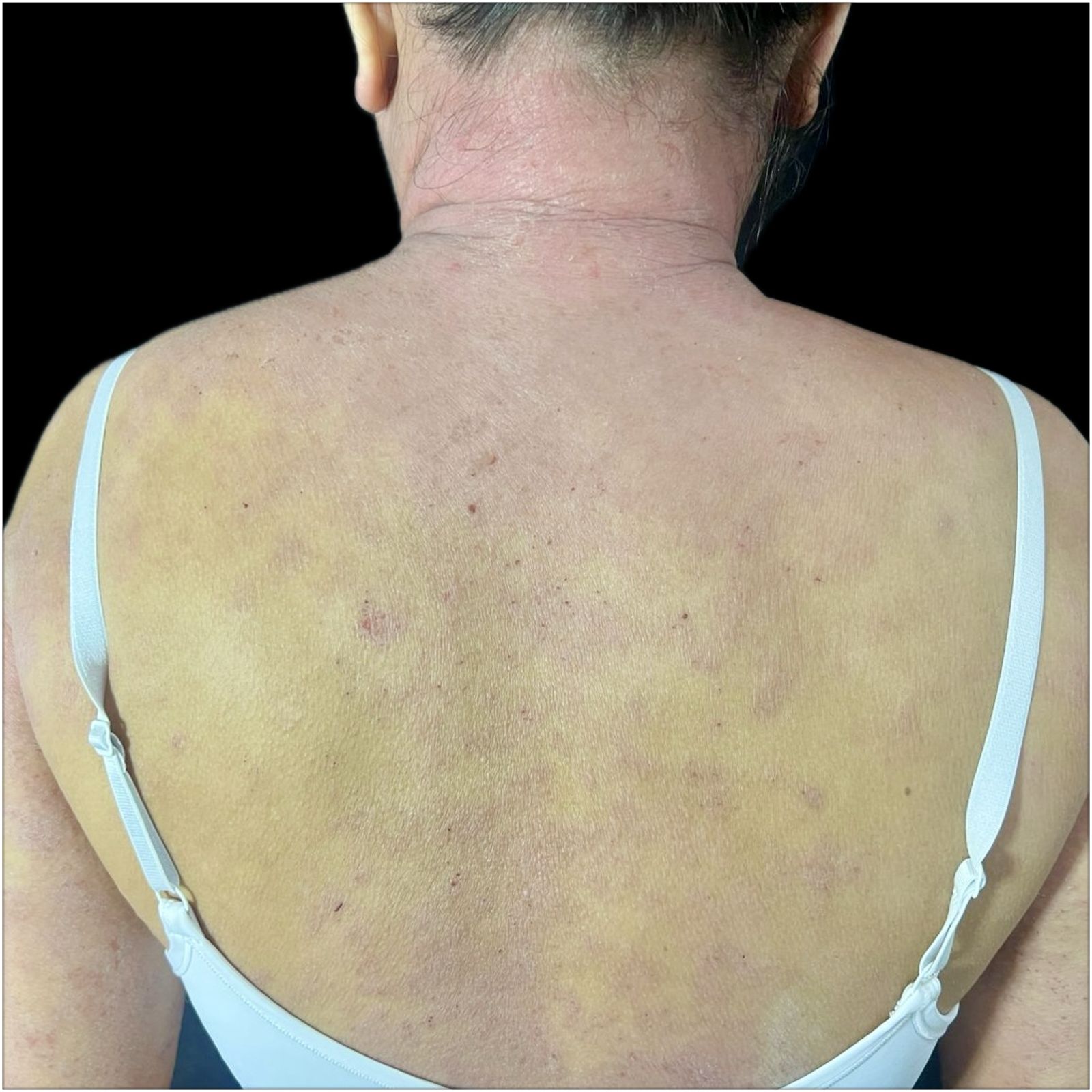We take great care in selecting our ingredients, with hypoallergenicity and efficacy being our primary filters. Aluminum chlorohydrate is generally well tolerated in skincare.
Aluminum Chlorohydrate and Skin Safety
Aluminum salts are widely used in deodorants and antiperspirant preparations. Allergic sensitivity to aluminum chlorohydrate is very rare considering the extent of exposure from antiperspirants. In addition to respected research on the subject that prove that it is non-irritating, our own products with aluminum chlorohydrate (Essence Skin-Saving Stay Fresh-ener, Essence Skin-Saving Antiperspirant, Illuminants Axillight Treatment Antiperspirant, and Fine Finish Pore-celain Effect Mattifier for Oily Skin) have shown 0 instances of irritations, post-inflammatory irritations (darkening due to a skin trauma), or granulomas (bumps) even after decades in the market and hundreds of post-market surveillance case studies.
Aluminum zirconium salts in deodorants and antiperspirants are known to cause allergic reactions as well as granulomas (bumps).
Aluminum was named Allergen of the Year by the American Academy of Dermatitis in 2022 — not because of a high number of contact allergies reported in patch tests (while there are reported cases, contact reactions still tend to be notably rare, especially for how common this substance is, as a recent review on reactions to aluminum shows) but because of surprising new research on aluminum’s allergenicity in some vaccines and immunotherapy, especially in children. Click here for more information on aluminum’s unlikeliness as a contact allergen in regular topical use.
Is Aluminum Chlorohydrate Linked to Breast Cancer or Alzheimer’s Disease?
In general, a key factor to consider is that most topically applied ingredients are not readily absorbed by the skin, enough to penetrate the epidermis, dermis, and get to the bloodstream. As the American Cancer Society states: “One study that looked at the absorption of aluminum from antiperspirants containing aluminum chlorohydrate applied to the underarms found that only a tiny fraction (0.012%) was absorbed. The actual amount of aluminum absorbed would be much less than what would be expected to be absorbed from the foods a person eats during the same time.”
The American Cancer Society puts it succinctly: “For many years, rumors have circulated online suggesting that underarm antiperspirants might cause breast cancer. While the research on this topic is limited, most studies have not found a link between antiperspirant use and the development of breast cancer.”
No one knows the definite cause of Alzheimer’s disease. Therefore, no one knows if aluminum or other metals play any role at all in causing AD. It has been suggested that aluminum is a cause of Alzheimer’s disease as some brain plaques have been found to contain the metal. Research in this area has been inconclusive. Aluminum accumulation may be a consequence of the Alzheimer’s damage, not the cause.
If there is any toxicity of aluminum it must be via a very specific mechanism, since total human exposure to the element in the form of naturally occurring clay in soil, dust, and in food is enormously large over a lifetime … far greater than the exposure one would have by using antiperspirants that contain the normal concentrations of the ingredient on a daily basis for several years.
Newer reports support that more studies are needed but that the greater risk seems to be from ingestion (“intragastric, oral, intracisternal, intraventricular, or intracerebral modes of administration”) which can bypass the blood-brain barrier — unlikely from normal exposure to cosmetics, especially in the molecular size and concentration in most skincare products, and certainly ours). Even in oral studies, which mimic human exposure, researchers specify that “because only a limited amount of Al is absorbed, it necessary to have a much longer exposure periods for Al to accumulate in neurons to toxic amounts.”
If I am allergic to nickel, am I also allergic to aluminum chlorohydrate since they have the same alloy?
No. There is no cross-reactivity between nickel (consistently ranked as a top contact allergen) and aluminum which is a rare allergen.
Aluminum chlorohydrate irritations are so rare that the ingredient is not included in the allergens tested by the North American Contact Dermatitis Group and European Surveillance Study on Contact Allergens. This is notable considering how common this ingredient is in so many products (the more commonly found an ingredient is, the higher the risk of it being an allergen).
Main References:
Regularly published reports on the most common allergens by the North American Contact Dermatitis Group and European Surveillance System on Contact Allergies (based on over 28,000 patch test results, combined), plus other studies. Remember, we are all individuals — just because an ingredient is not on the most common allergen lists does not mean you cannot be sensitive to it, or that it will not become an allergen. These references, being based on so many patch test results, are a good basis but it is always best to get a patch test yourself.
- Kandimalla R, Vallamkondu J, Corgiat EB, Gill KD. Understanding Aspects of Aluminum Exposure in Alzheimer’s Disease Development. Brain Pathol. 2016 Mar;26(2):139-54. doi: 10.1111/bpa.12333. Epub 2015 Dec 8. PMID: 26494454; PMCID: PMC8028870.
- Bruze M, Netterlid E, Siemund I. Aluminum-Allergen of the Year 2022. Dermatitis. 2022 Jan-Feb 01;33(1):10-15.
- Kullberg SA, Ward JM, Liou YL, Atwater AR, et al. Cutaneous Reactions to Aluminum. Dermatitis. 2020 Nov/Dec;31(6):335-349.
- Hicks, L. “Aluminum Named Allergen of the Year.” Medscape, Medscape, 28 Mar. 2022, https://www.medscape.com/viewarticle/970976.
- Kanerva L, Estlander T, Jolanki R 1995 Dental Problems in: Guin JD (ED) Practical Contact Dermatitis. A Handbook for the Practitioner. McGraw-Hill, New York, PP397-432.
- Shelly WB, Hurley HJ (1958) Allergic origina of zirconium deodorant granuloma. BR J Dermatol 70:75-101.
- DeKoven JG, Warshaw EM, Reeder MJ, et al. North American Contact Dermatitis Group Patch Test Results: 2019-2020. Dermatitis. 2023 Mar-Apr;34(2):90-104. doi: 10.1089/derm. 2022.29017.jdk. Epub 2023 Jan 19. PMID: 36917520.
- Uter W, Wilkinson SM, Aerts O, et al. ESSCA and EBS ESCD working groups, and the GEIDAC. Patch test results with the European baseline series, 2019/20-Joint European results of the ESSCA and the EBS working groups of the ESCD, and the GEIDAC. Contact Dermatitis. 2022 Oct;87(4):343-355. doi: 10.1111/cod.14170. Epub 2022 Jun 24. PMID: 35678309. https://pubmed.ncbi.nlm.nih.gov/35678309/
- DeKoven JG, Silverberg JI, Warshaw EM, Atwater AR, et al. North American Contact Dermatitis Group Patch Test Results: 2017-2018. Dermatitis. 2021 Mar-Apr 01;32(2):111-123.
- DeKoven JG, Warshaw EM, Zug KA, et al. North American Contact Dermatitis Group Patch Test Results: 2015-2016. Dermatitis. 2018 Nov/Dec;29(6):297-309.
- DeKoven JG, Warshaw EM, Belsito DV, et al. North American Contact Dermatitis Group Patch Test Results 2013-2014. Dermatitis. 2017 Jan/Feb;28(1):33-46.
- Warshaw, E.M., Maibach, H.I., Taylor, J.S., et al. North American contact dermatitis group patch test results: 2011-2012. Dermatitis. 2015; 26: 49-59.
- W Uter et al. The European Baseline Series in 10 European Countries, 2005/2006–Results of the European Surveillance System on Contact Allergies (ESSCA). Contact Dermatitis 61 (1), 31-38.7 2009.
- Wetter, DA et al. Results of patch testing to personal care product allergens in a standard series and a supplemental cosmetic series: An analysis of 945 patients from the Mayo Clinic Contact Dermatitis Group, 2000-2007. J Am Acad Dermatol. 2010 Nov;63(5):789-98.
- Zug KA, Warshaw EM, Fowler JF, et al. Patch-test results of the North American Contact Dermatitis Group 2005-2006. Dermatitis. 2009;20(3):149-60 Uter W, Ramsch C, Aberer W, Ayala F, Balato et al. The European baseline series in 10 European countries. 23005/2006 – Results of the European Surveillance System on Contact Allergies (ESSCA). Contact Dermatitis. 2009;62:31-38
- Warshaw EM, Buonomo M, DeKoven JG, et al. Importance of Supplemental Patch Testing Beyond a Screening Series for Patients With Dermatitis: The North American Contact Dermatitis Group Experience. JAMA Dermatol. 2021 Dec 1;157(12):1456-1465.
- Verallo-Rowell VM. The validated hypoallergenic cosmetics rating system: its 30-year evolution and effect on the prevalence of cosmetic reactions. Dermatitis 2011 Apr; 22(2):80-97.
- Ruby Pawankar et al. World Health Organization. White Book on Allergy 2011-2012 Executive Summary.
- Misery L et al. Sensitive skin in the American population: prevalence, clinical data, and role of the dermatologist. Int J Dermatol. 2011 Aug;50(8):961-7.
- Warshaw EM1, Maibach HI, Taylor JS, Sasseville D, DeKoven JG, Zirwas MJ, Fransway AF, Mathias CG, Zug KA, DeLeo VA, Fowler JF Jr, Marks JG, Pratt MD, Storrs FJ, Belsito DV. North American contact dermatitis group patch test results: 2011-2012.Dermatitis. 2015 Jan-Feb;26(1):49-59.
- Warshaw, E et al. Allergic patch test reactions associated with cosmetics: Retrospective analysis of cross-sectional data from the North American Contact Dermatitis Group, 2001-2004. J AmAcadDermatol 2009;60:23-38.
- Foliaki S et al. Antibiotic use in infancy and symptoms of asthma, rhinoconjunctivitis, and eczema in children 6 and 7 years old: International Study of Asthma and Allergies in Childhood Phase III. J Allergy Clin Immunol. 2009 Nov;124(5):982-9.
- Kei EF et al. Role of the gut microbiota in defining human health. Expert Rev Anti Infect Ther. 2010 Apr; 8(4): 435–454.
- Thavagnanam S et al. A meta-analysis of the association between Caesarean section and childhood asthma. Clin Exp Allergy. 2008;38(4):629–633.
- Marks JG, Belsito DV, DeLeo VA, et al. North American Contact Dermatitis Group patch-test results, 1998 to 2000. Am J Contact Dermat. 2003;14(2):59-62.
- Warshaw EM, Belsito DV, Taylor JS, et al. North American Contact Dermatitis Group patch test results: 2009 to 2010. Dermatitis. 2013;24(2):50-99.
- Verallo-Rowell V. M, Katalbas S.S. & Pangasinan J. P. Natural (Mineral, Vegetable, Coconut, Essential) Oils and Contact Dermatitis. Curr Allergy Asthma Rep 16,51 (2016) . https://doi.org/10.1007/s11882-016-0630-9.
- Park G, Oh DS, Lee MG, Lee CE, Kim YU. 6-Shogaol, an active compound of ginger, alleviates allergic dermatitis-like skin lesions via cytokine inhibition by activating the Nrf2 pathway. Toxicol Appl Pharmacol. 2016 Nov 1;310:51-59. doi: 10.1016/j.taap.2016.08.019. Epub 2016 Aug 22. PMID: 27562088.
- de Groot AC. Monographs in Contact Allergy, Volume II – Fragrances and Essential Oils. Boca Raton, FL: CRC Press Taylor & Francis Group; 2019.
- De Groot AC. Monographs in Contact Allergy Volume I. Non-Fragrance Allergens in Cosmetics (Part I and Part 2). Boca Raton, Fl, USA: CRC Press Taylor and Francis Group, 2018.
- Zhu TH, Suresh R, Warshaw E, et al. The Medical Necessity of Comprehensive Patch Testing. Dermatitis. 2018 May/Jun;29(3):107-111.
Want more great information on contact dermatitis? Check out the American Contact Dermatitis Society, Dermnet New Zealand, the Contact Dermatitis Institute, and your country’s contact dermatitis association.

Laura is our “dew”-good CEO at VMV Hypoallergenics and eldest daughter of VMV’s founding dermatologist-dermatopathologist. She has two children, Madison and Gavin, and works at VMV with her sister CC and husband Juan Pablo (Madison and Gavin frequently volunteer their “usage testing” services). In addition to saving the world’s skin, Laura is passionate about health, inclusion, cultural theory, human rights, happiness, and spreading (like a VMV cream!) goodness!






